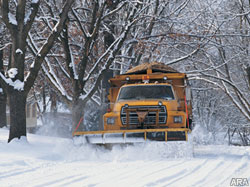(ARA) – As the nation gears up for yet another winter snow season, it’s important to remember that large snowstorms aren’t just an inconvenience – they cost money. If the roads are not properly cleared of snow and ice in a timely manner, people can’t get to work. If people can’t get to work, they can’t produce the goods and services that everyone has come to rely on every day.
The American Highway Users Alliance (www.highways.org), in conjunction with Global Insight, has released a study estimating the economic impact of snowstorms in 16 U.S. states and two Canadian provinces. The study found that, in addition to the cost to clean up sidewalks, roads and buildings, hundreds of millions of dollars in economic opportunity are lost each day a state is shuttered by impassable roads because workers can’t get to work. A one-day shutdown due to a snow storm can cost a state as much as $700 million dollars.
The study also found that hourly workers are the most harshly impacted by such shutdowns, representing America’s most economically vulnerable people.
“Lost wages of hourly workers account for about two-thirds of the direct economic impact of a major snowstorm,” says James Gillula, managing director of Global Insight and the principal researcher of the study. “Among all workers, hourly wage workers can suffer the most painful economic losses and the indirect economic effects of their lost wages can ripple through the economy.”
The study, the Highway Users Alliance noted, gives needed perspective on the true costs of what is often thought of as harmless and fun. For state and local authorities, it could serve as a wake-up call for bigger snow removal budgets.
“Although snow days often conjure happy childhood memories, this study makes it crystal clear that they have a tangible and serious negative impact on real working people and a wide range of businesses,” says Greg Cohen, American Highway Users Alliance president and CEO. “The shocking losses estimated by this study should light a fire under state and local authorities nationwide to get serious about investing in quicker and more effective snow and ice removal. When roads are left unsafe or impassible, it is like money being thrown down the drain.”
The study further examined the indirect economic impacts caused by snow closures, including lost sales tax revenue and significant losses in the restaurant, general merchandise and gasoline industries. These indirect impacts more than doubled the initial direct impact of each storm. For restaurants in the metropolitan Washington D.C. area, economic losses from February’s historic blizzard were particularly stark. “The losses suffered by some restaurants can, and will, define their viability in the very near future,” says Lynne Breaux, president of the Restaurant Association Metropolitan Washington. In a city that was left all but inaccessible for an entire week, recovering from the shutdown was a mammoth task for many Washington businesses.
Additional information on the study can be found at www.highways.org/pdfs/economic-costs-of-snowstorms.pdf. For a brochure on the safety and economic benefits of clear winter roads, visit www.roadwaysafety.org/wp-content/uploads/snowremovalbrochure-final.pdf.

